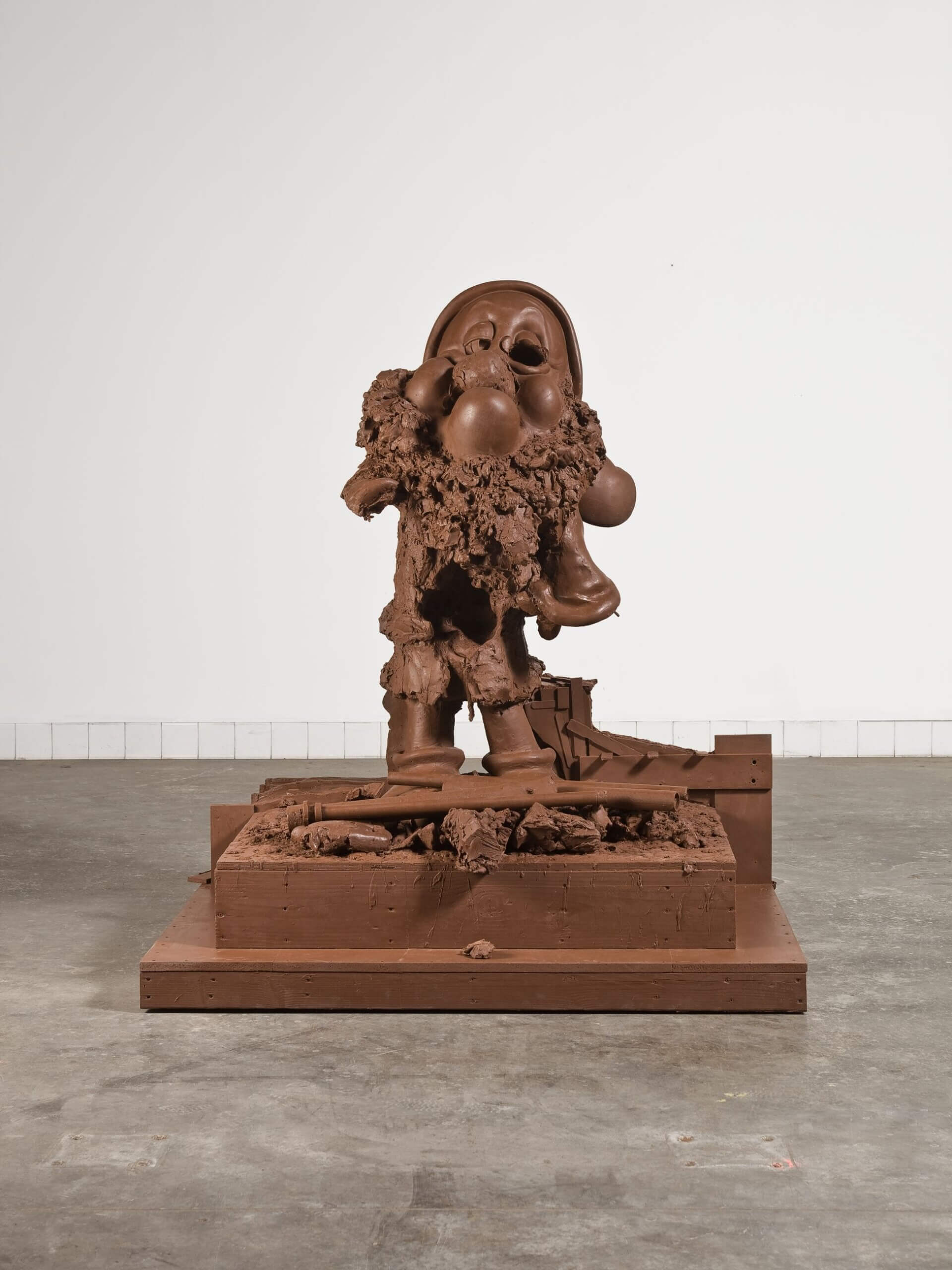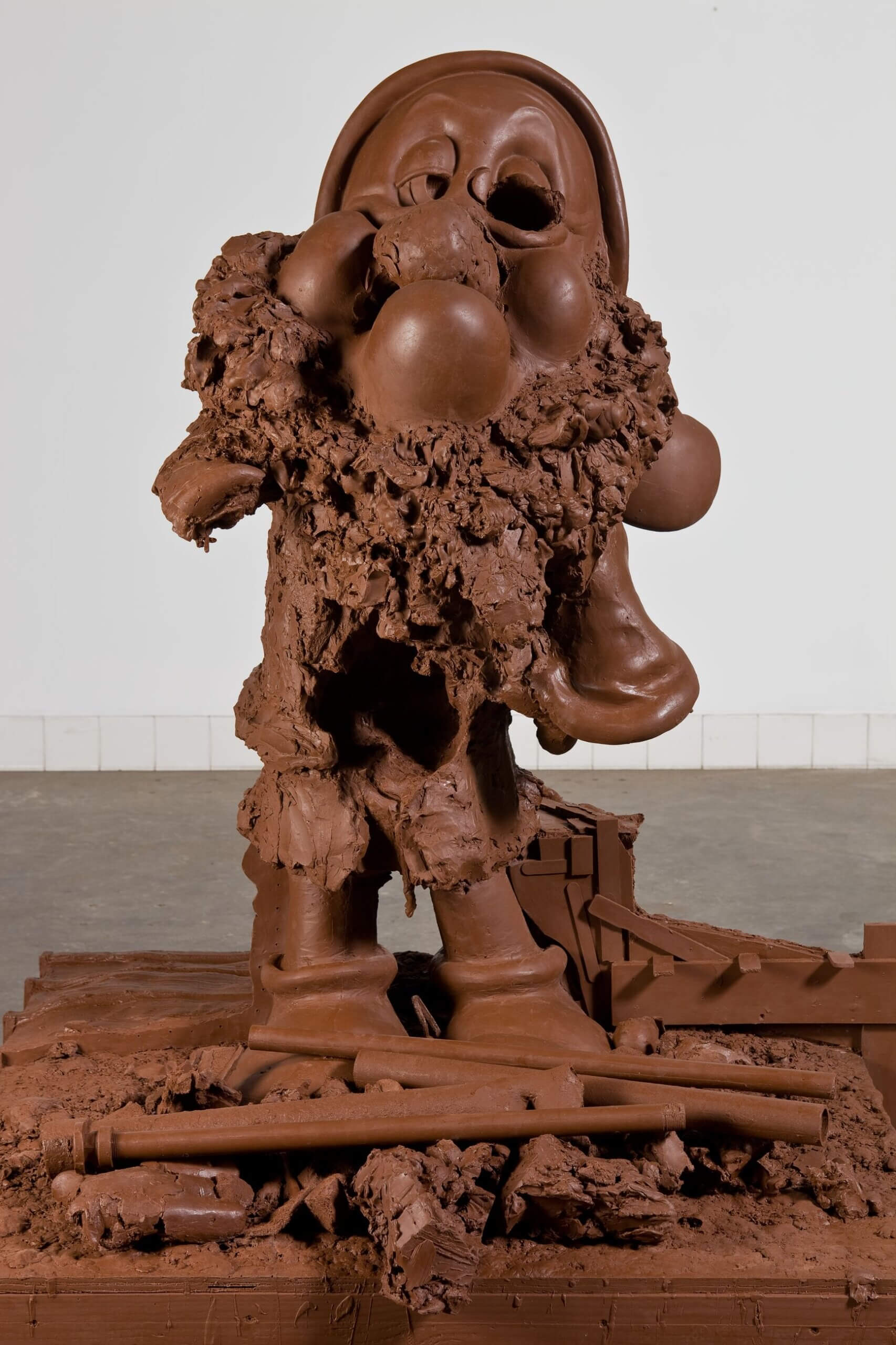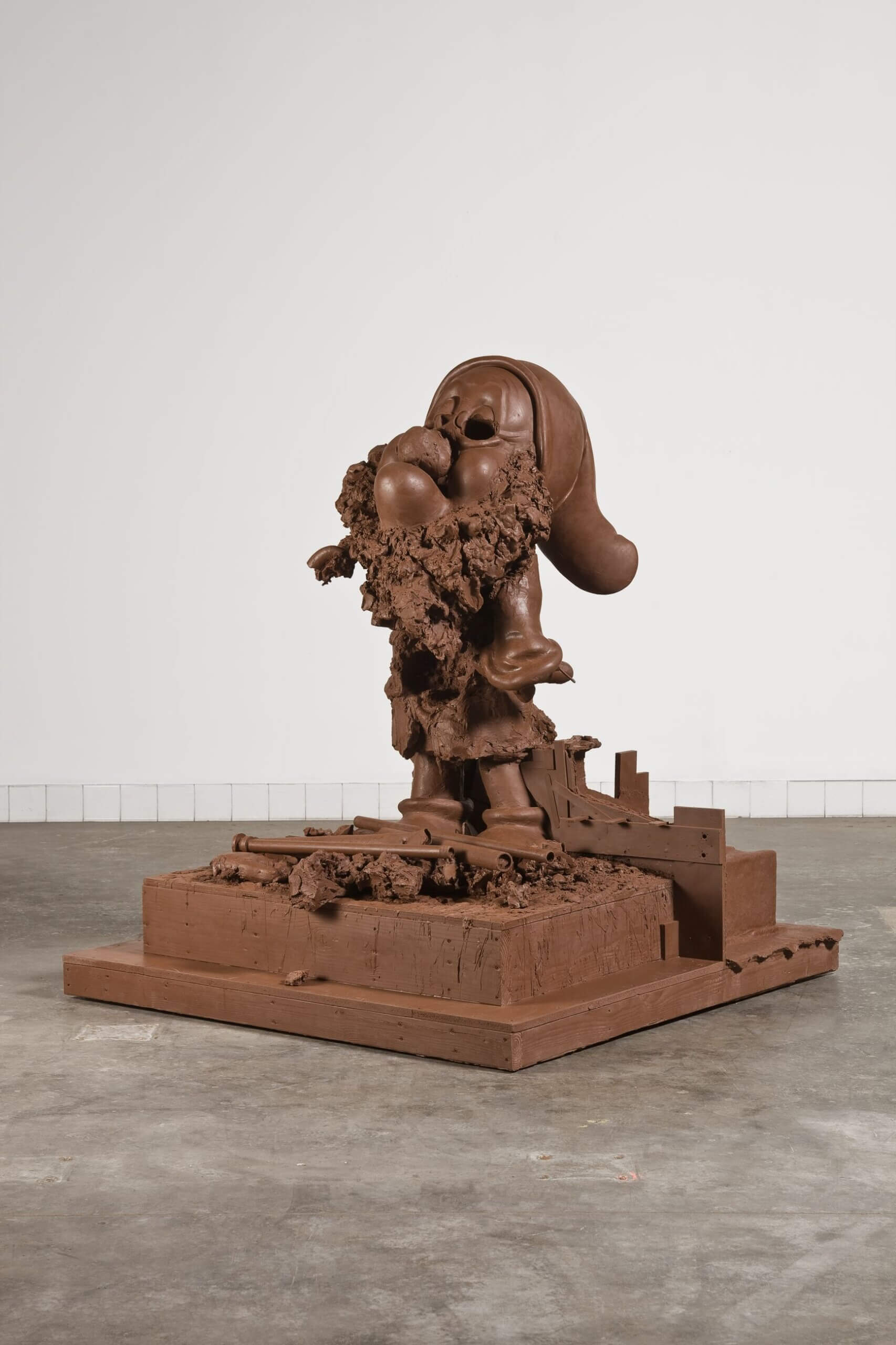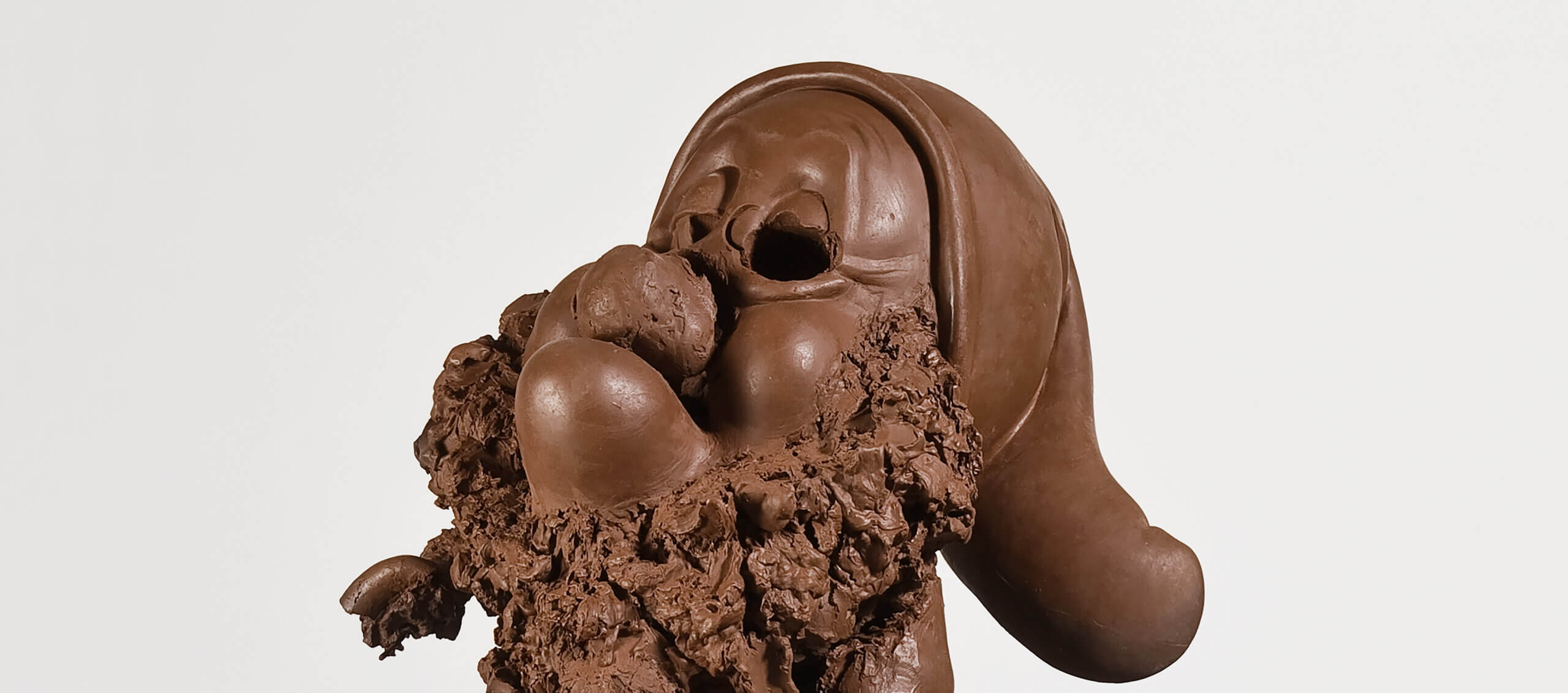
Paul McCarthy
White Snow Dwarf (Sleepy)
White Snow Dwarf (Sleepy)
2010 Brown silicone Ed. 3/3 + 2 AP 173.4 x 157.5 x 156.2 cm / 68 1/4 x 62 x 61 1/2 in USD 975,000
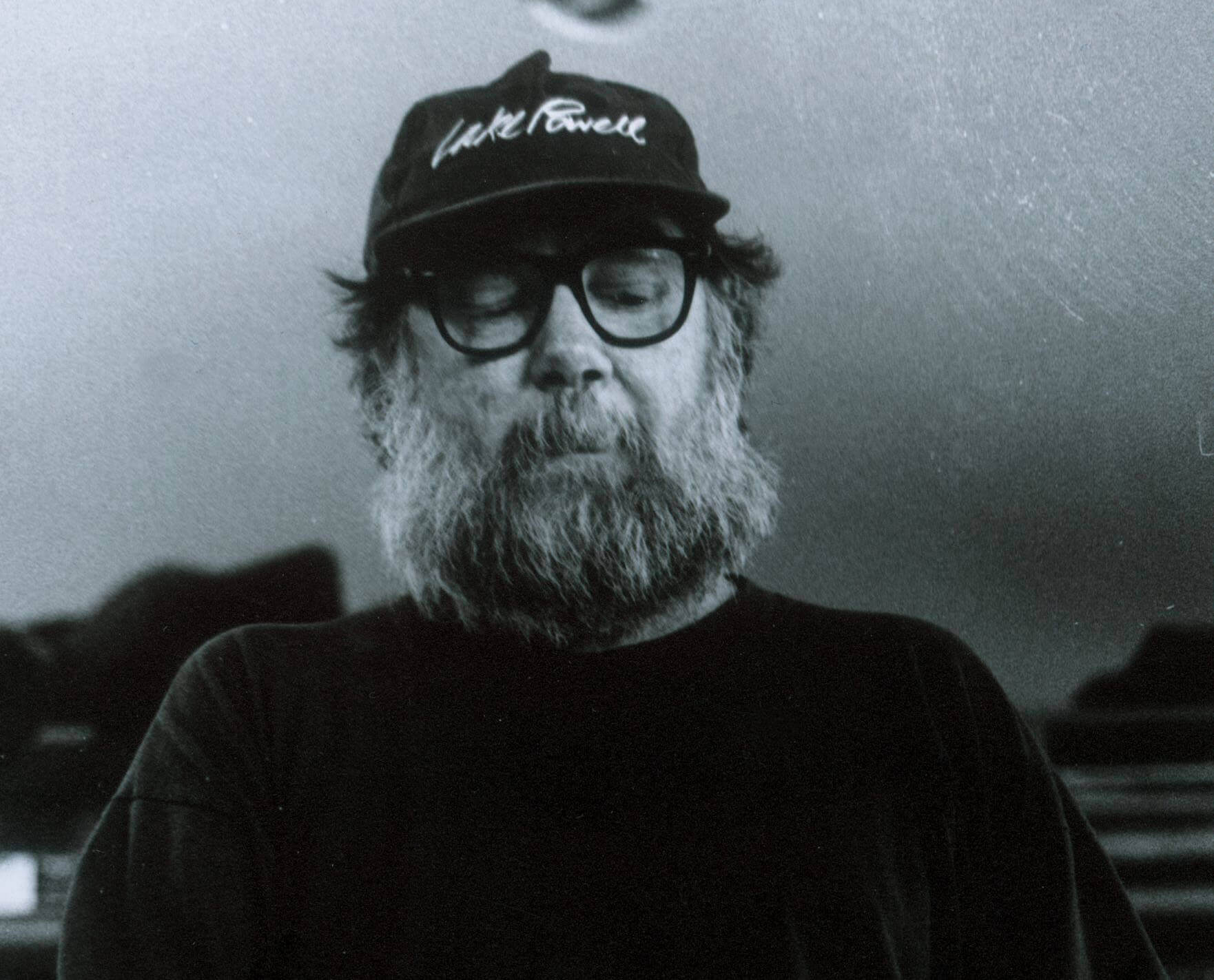
Paul McCarthy
Paul McCarthy is widely considered to be one of the most influential and groundbreaking contemporary American artists. Born in 1945, and raised in Salt Lake City, Utah, he first established a multi-faceted artistic practice, which sought to break the limitations of painting by using unorthodox materials such as bodily fluids and food. He has since become known for visceral, often hauntingly humorous work in a variety of mediums – from performance, photography, film and video, to sculpture, drawing and painting.
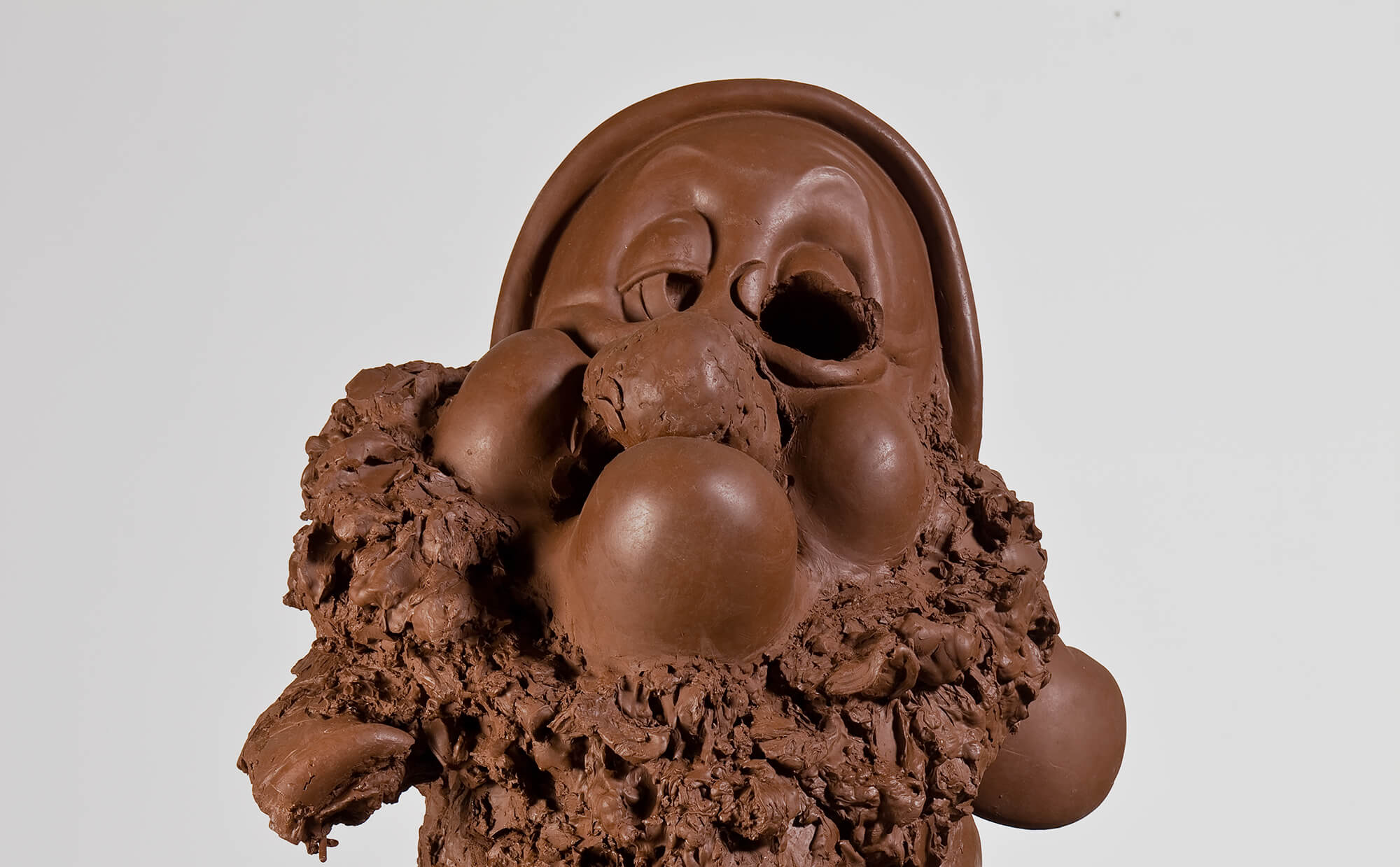
Striking in size and psychologically engaging, ‘White Snow Dwarf (Sleepy)’ is an outstanding example of McCarthy’s tireless exploration of mediums. McCarthy first made a large-scale version of ‘White Snow Dwarf (Sleepy)’ out of clay, based on the small figurine, which was then used to create a fiberglass mould that allowed for this silicon sculpture to be produced. True to his cyclical practice of transformation and creation through the act of destruction, the initial clay version, although mostly destroyed in the process of separating it from the fiberglass mould, became both a standalone sculpture and the progenitor of a bronze iteration.
‘Casting liberates the literal through a kind of unifying monotone, a different representation of the original thing that lets me explore where reality and abstraction intersect.’
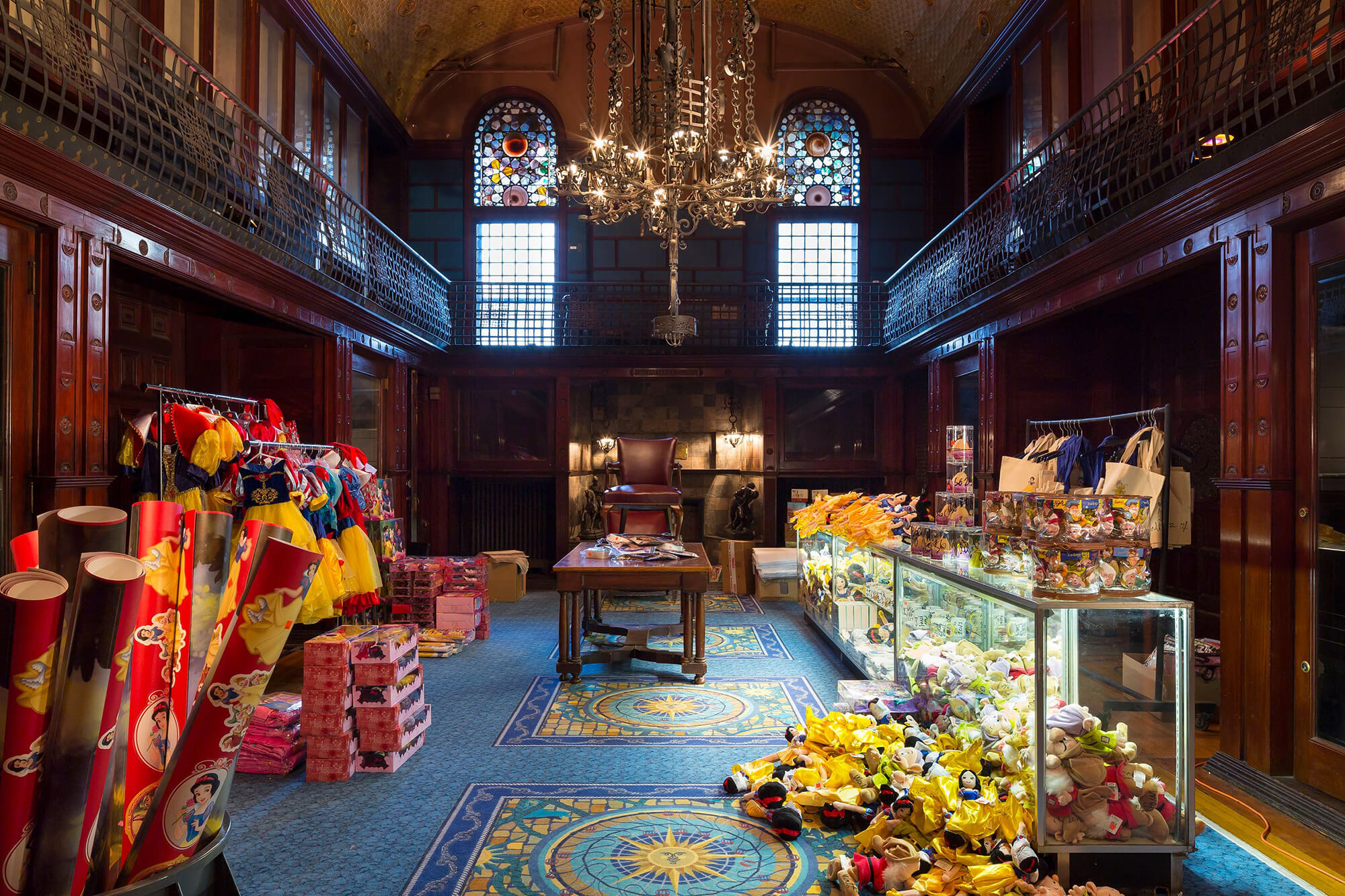
‘White Snow Dwarf (Sleepy)’ emerges from McCarthy’s exploration of the famous 19th century German folk tale Schneewittchen (Snow White) and the modern interpretation of that story in Disney’s 1937 animated classic film ‘Snow White and the Seven Dwarfs’. This theme has pervaded his practice since 2009, resurfacing and developing through various iterations and media: first in as a series of drawings, followed by sculptures, performance and video, culminating in a multi-platform narrative incorporating all aspects of his practice in an epic installation called ‘WS’ (White Snow), presented at the Park Avenue Armory, New York, in 2013.
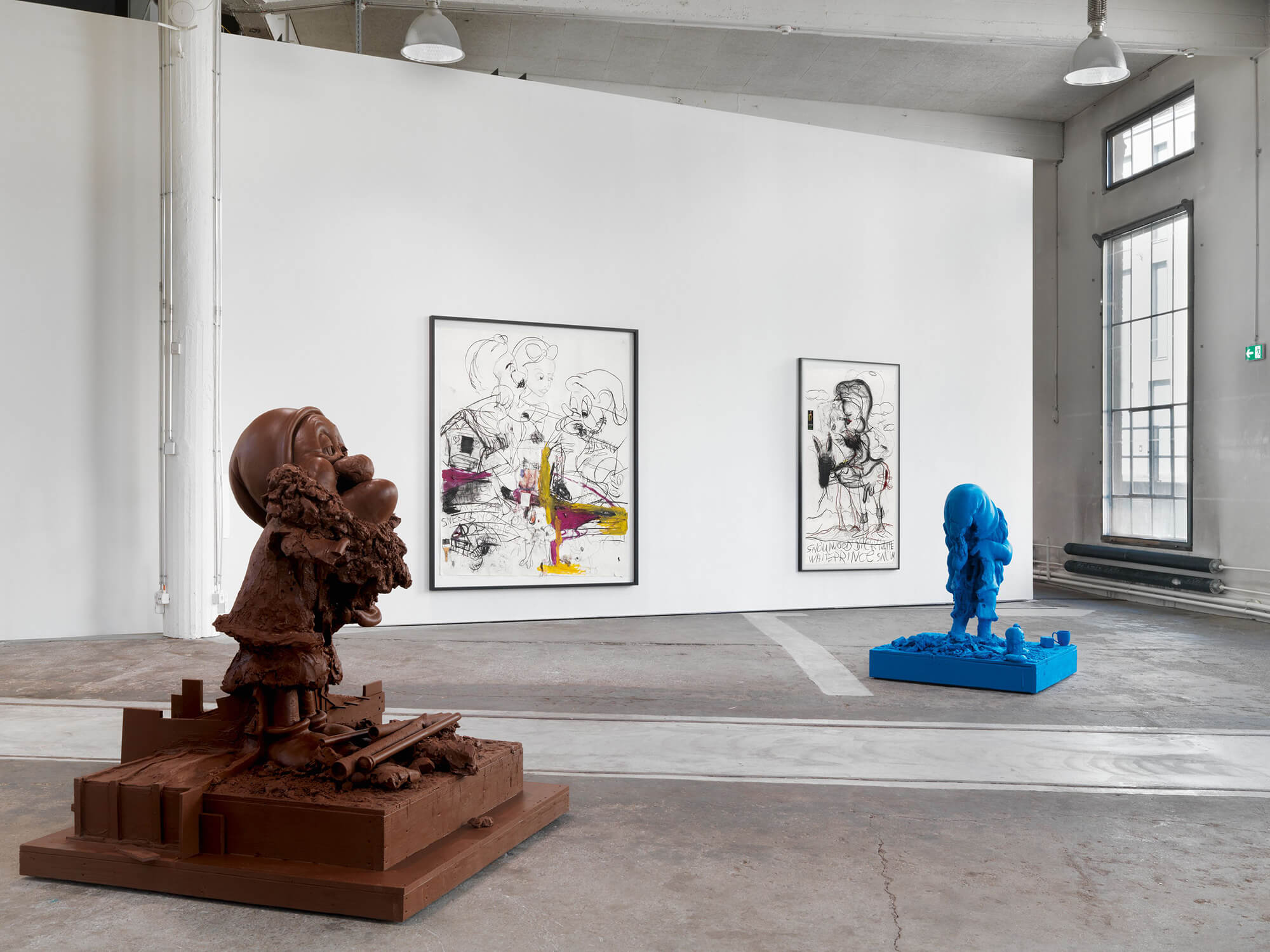
Often humorous and sardonic, McCarthy’s work challenges societal norms, mining the psychological implications of cultural representation and the American Dream. Merging the sinister undercurrents of the original nineteenth century tale with Disney’s unstintingly commercialized version, Snow White is used as both a vehicle and a cultural touchstone, which he uses to examine a darker underpinning of consumerism as an initiation of innocence into a culture of desire and fetishism. Amalgamating these with personal memories, the artist has opened, perhaps more widely than ever before, a window onto the deeper regions of his artistic discipline and psyche.
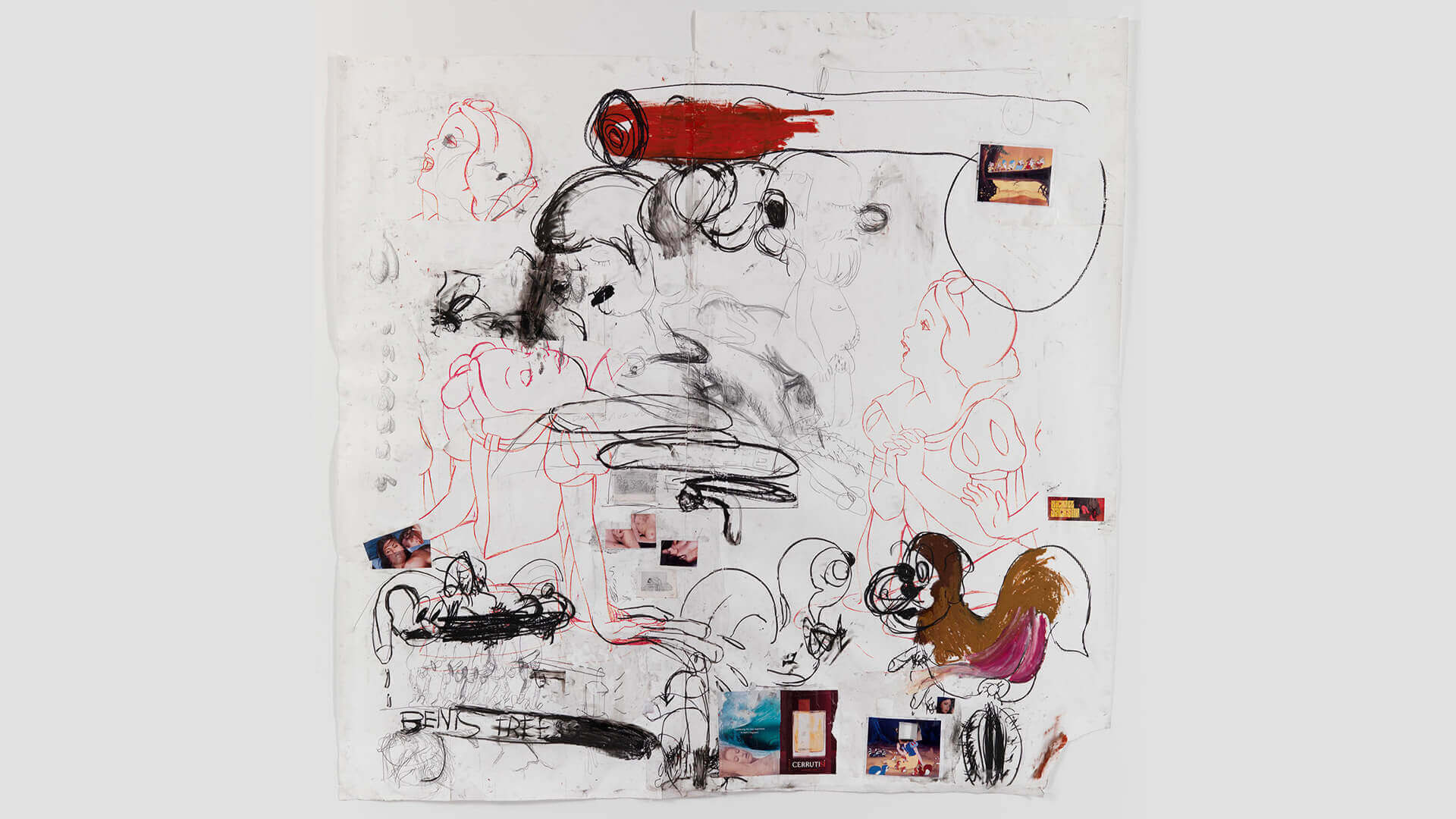
‘White Snow Dwarf (Sleepy)’ is a nightmarishly twisted variation of the original. Standing as a mocking parody of its saccharin and languorous progenitor, Sleepy’s warm brown colouration evokes rich chocolate, recalling McCarthy’s use of food stuffs as bodily fluids within his performance works. The apparent decay and degradation of ‘White Snow Dwarf (Sleepy)’ is rendered shockingly tangible through the medium of sculpture, through which the marks of McCarthy’s ‘assault’ are transferred in an effect that is remarkable in its very physicality.
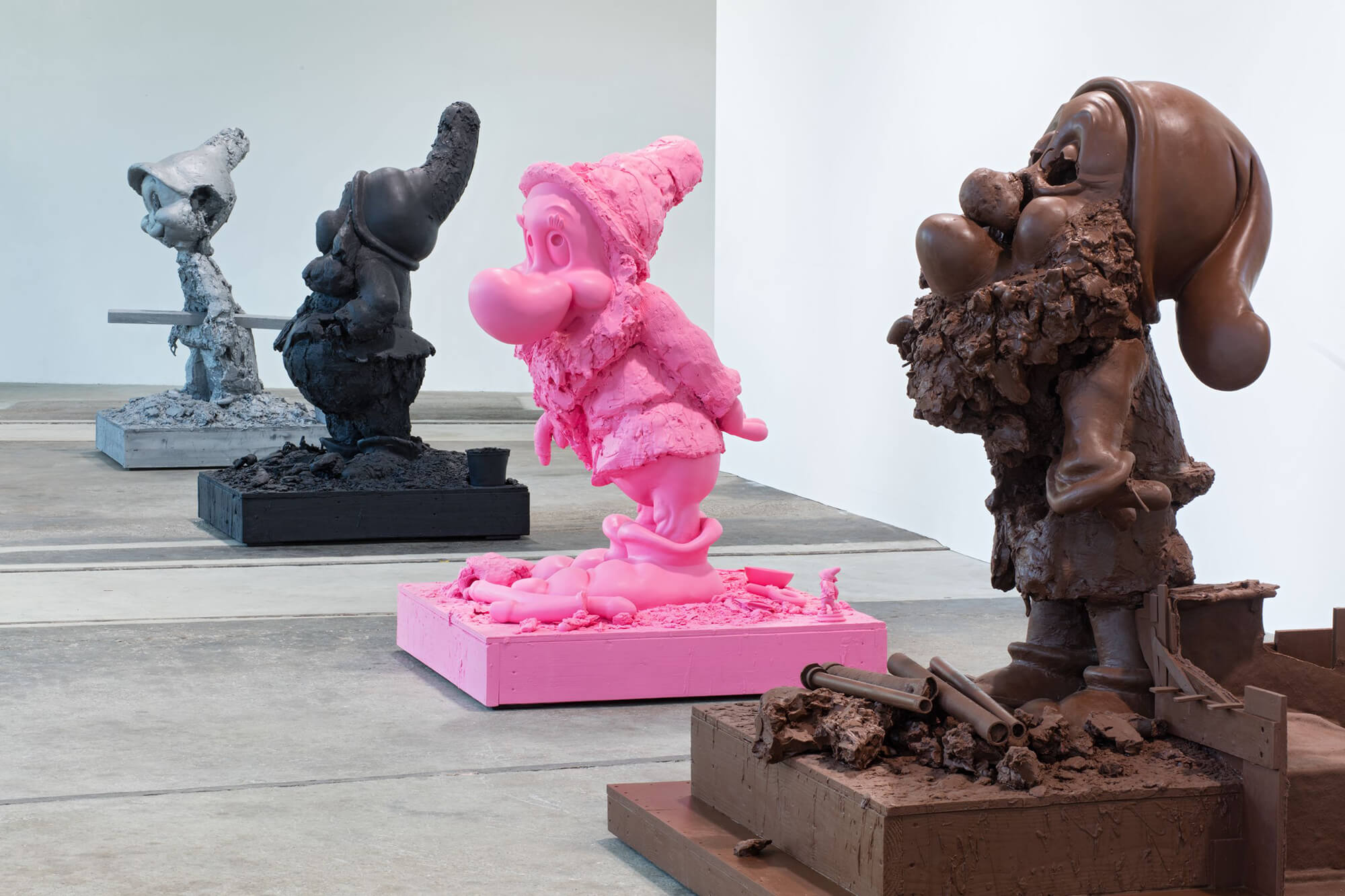
With these latest White Snow sculptures, McCarthy alludes to Disney’s contribution to the Golden Age of Animation and raises questions about how an artist’s work rearranges and deranges definitions of art, culture and thought. Further alluding to themes of mass-production and consumerism, McCarthy repeated the same process with other dwarf figures from the Snow-White tale, each beckoning for our consumption. Opening a window onto the deeper regions of his artistic discipline and psyche, the mining of Snow White and the resulting ‘White Snow Dwarf (Sleepy)’ captures McCarthy’s complex contributions to art historical concepts of abstraction.

Ursula Hauser remembers meeting Paul McCarthy and encountering the dwarf series in his small studio in Pasadena. ‘It was an absolute must for me to buy the drawings along with the works themselves’, she said, ‘His new works were related to Switzerland. He had carte blanche, worked out huge projects like ‘Mechanized Chalet’ (1993/1999), designed to fold open and close up again. And then he made his Heidi works! Paul had studied Switzerland, its history and traditions, in great depth…. I was fascinated by his ability to capture the audience and make us part of the work.’
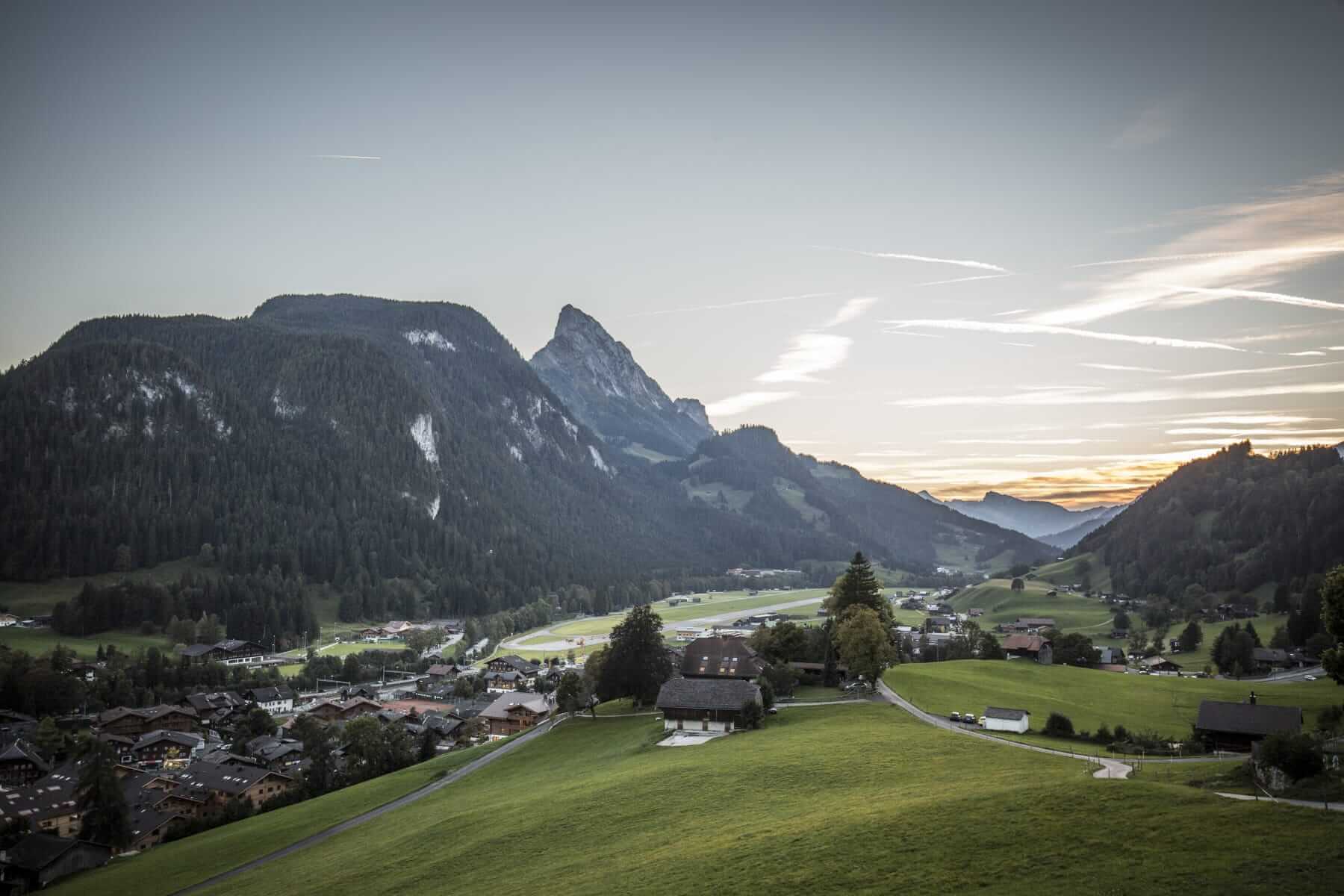
On view in Gstaad
This summer in Gstaad, we bring together a selection of sculptures, photographs, drawings and a video work by McCarthy at Tarmak 22 in ‘Alpine Stories and other Dystopias’. The theme of the Swiss Alps as a locale is the presentation’s point of departure to explore the ideas of innocence and utopia.

